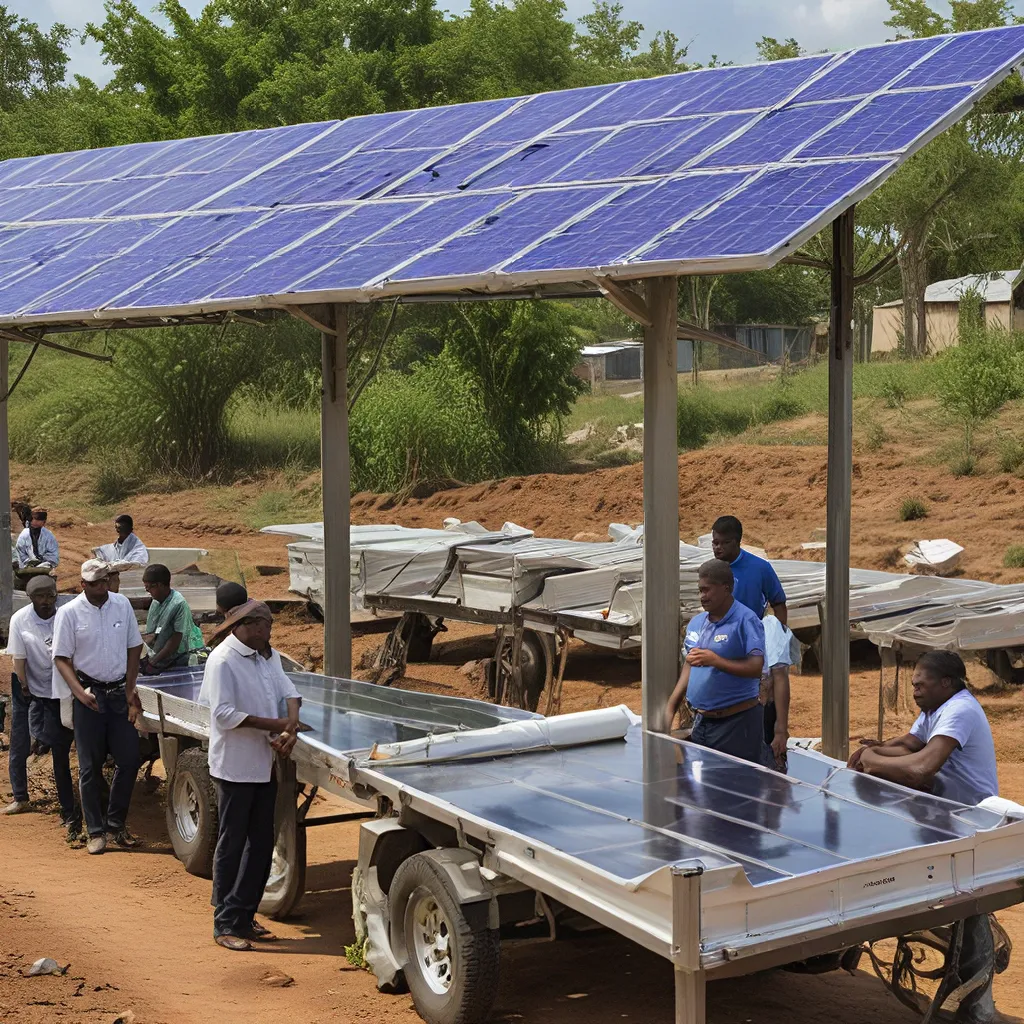
Powering Hope in Times of Crisis
As I sit here, staring out at the devastation left in the wake of another ferocious hurricane, I can’t help but feel a twinge of hopelessness. The images of flooded streets, crumpled buildings, and displaced families tug at my heartstrings, reminding me of the harsh realities that climate change has in store for our world. But amidst the gloom, a glimmer of light catches my eye – the gleam of solar panels standing tall, providing a vital lifeline to those in need.
It’s in these moments of crisis that the true power of solar-powered solutions shines through, quite literally. While the traditional power grid lies crippled, these renewable energy marvels emerge as beacons of hope, offering a way forward when all seems lost. And as I delve deeper into the role of electric vehicles (EVs) and resilience hubs in disaster relief, I can’t help but feel a renewed sense of optimism for the future.
Electric Vehicles: Mobilizing Emergency Relief
Picture this: a community ravaged by a devastating storm, with power lines down and fuel supplies dwindling. In a time of darkness, electric vehicles come to the rescue, serving as mobile power stations and efficient evacuation tools. Thanks to their V2H (vehicle-to-home) and V2G (vehicle-to-grid) technology, these eco-friendly marvels can seamlessly provide electricity to homes and critical infrastructure, keeping the lights on and the essential services running.
But the benefits of EVs in disaster response don’t stop there. Their emissions-free operation ensures safe and sustainable mobility during evacuations, allowing families to escape harm’s way without contributing to the already polluted air. And for those who can’t leave, some electric SUVs and crossovers even offer off-road capabilities, making them well-suited for navigating the treacherous terrain left in the wake of a natural disaster.
Imagine a scenario where an EV is transformed into a mobile charging station, powering up smartphones and medical devices to keep critical lines of communication open and lifesaving equipment running. Or picture one serving as a portable refrigeration unit, preserving vital medical supplies, vaccines, and perishable food items – a true godsend in the face of power outages and supply chain disruptions.
Resilience Hubs: Fortifying Communities
As the climate crisis intensifies, communities are being forced to prioritize resilience, and the rise of resilience hubs is a testament to this crucial shift. These community-serving facilities are designed to support residents, distribute essential resources, and enhance quality of life – all while reducing carbon emissions and preparing for the worst.
Resilience hubs can be a game-changer in disaster-prone areas, offering a safe haven and a lifeline for those in need. Imagine a community center transformed into a resilience hub, its energy-efficient design and solar-plus-storage system ensuring that it remains a reliable source of power, even when the grid goes down. During a crisis, this hub can serve as a cooling or warming center, a distribution point for supplies, and a hub for critical communication – all while reducing the burden on the overwhelmed emergency services.
But the beauty of resilience hubs lies in their proactive approach. By investing in these facilities before disaster strikes, communities can empower their most vulnerable residents, providing them with the resources and support they need to weather the storm. And as federal funding becomes more readily available, the path to building these resilient havens has never been smoother.
Overcoming Challenges, Driving Change
Of course, the integration of electric vehicles and resilience hubs in disaster response is not without its challenges. The limited charging infrastructure in disaster-prone areas, the potential for battery degradation, and the need for clear protocols and coordination among relief agencies are all hurdles that must be overcome.
But as the world grapples with the ever-increasing threats of climate change, the resolve to find solutions has never been stronger. Governments and communities are recognizing the immense potential of these technologies, investing in EV fleets for emergency services and funding the development of resilience hubs across the globe.
And as the energy-saving products industry continues to innovate, the future looks brighter than ever. Imagine a world where solar-powered solutions are seamlessly integrated into our disaster response strategies, where electric vehicles are as ubiquitous as traditional ones, and where resilience hubs dotting the landscape provide a lifeline to those in need.
A Glimmer of Hope in the Darkest Times
As I gaze out at the damaged landscape once more, I can’t help but feel a renewed sense of hope. The rays of sunlight filtering through the clouds are a reminder that even in the darkest of times, there is always a glimmer of hope. And it is in these moments that the true power of solar-powered solutions shines through, offering a path forward and a way to build a more resilient, sustainable future.
So, let us embrace these innovative technologies, let us work tirelessly to overcome the challenges, and let us drive change in the face of adversity. For in doing so, we can transform disaster response into a beacon of hope, a testament to the power of human ingenuity and the unstoppable force of renewable energy.